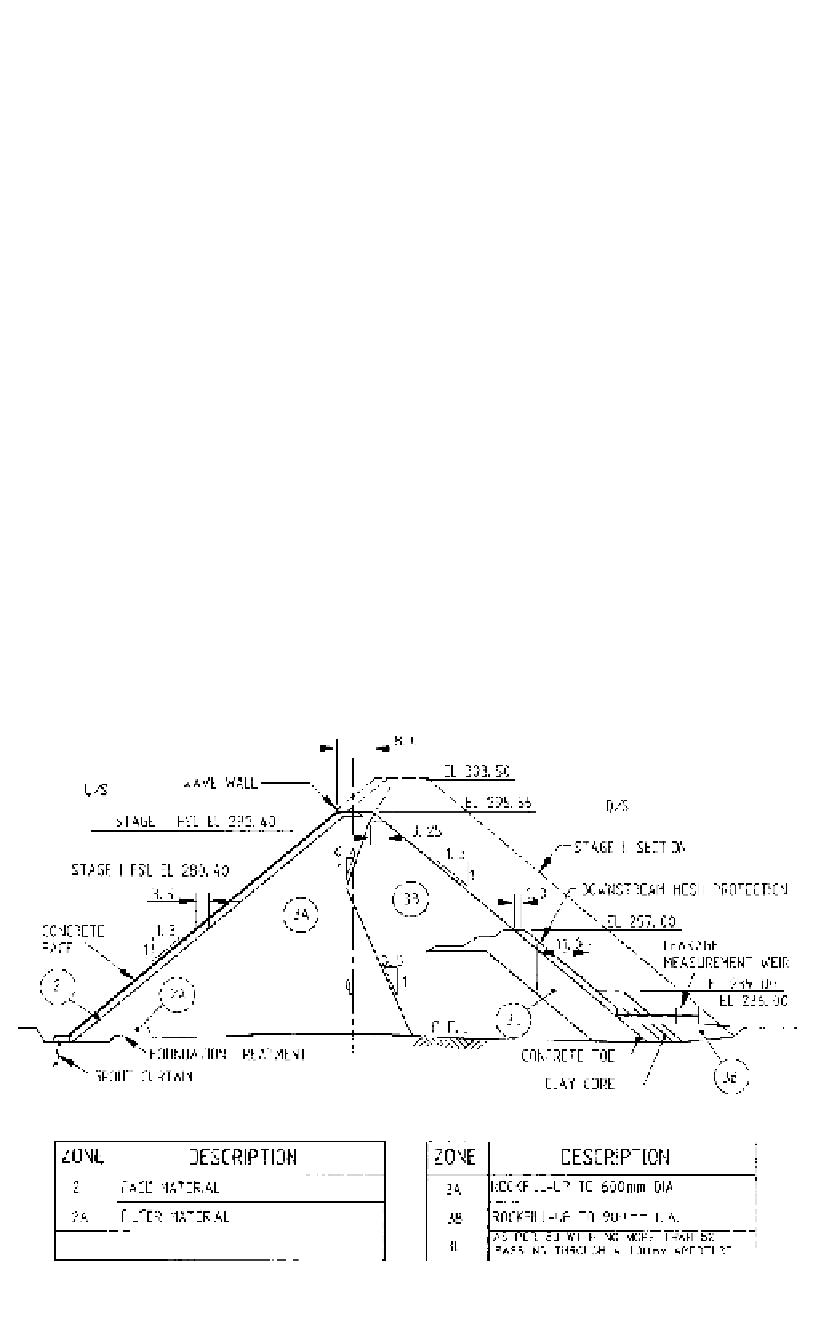Environmental Engineering Reference
In-Depth Information
Experience suggests that saddle dams have been often treated as “distant” to the main
dam in projects. This type of approach is very dangerous and could lead to major expen-
diture by a dam owner. A saddle dam must be treated in the same way and to the same
detail as a main dam. At first glance, the loss of a saddle dam might seem minor insofar
as downstream consequences or even in loss in storage. The recent experience of a fuse
plug failure in the U.S. in which erosion went a long way below the plug's foundation should
serve as a warning to an owner assuming the loss of a saddle dam would have little intact
on his business.
A particular issue that can cause significant problems to the designer of a saddle dam is
the dam's foundations. Tops of ridges often present different geological conditions than
one would expect to find in a valley. An experienced engineering geologist should be
asked to investigate any significant saddle damsite in a dam project.
8.4.6
Staged construction
It is often economic to construct a dam in two or more stages, e.g.:
-
In water supply, irrigation or hydropower projects, demand in the early years can often
be met with a lower dam and smaller storage;
-
In mine tailings dams, the storage required increases progressively as the tailings are
deposited in the dam.
If staging is planned, this favours adoption of concrete face rockfill, earth and rockfill
with sloping upstream core, or possibly earthfill with vertical (or sloping) drain and hor-
izontal drain.
Figures 8.11
, 8.15 and 19.25, show examples of dams designed for staged
construction.
Figure 8.15.
Boondooma Dam (courtesy Water Resources Commission of Queensland).

